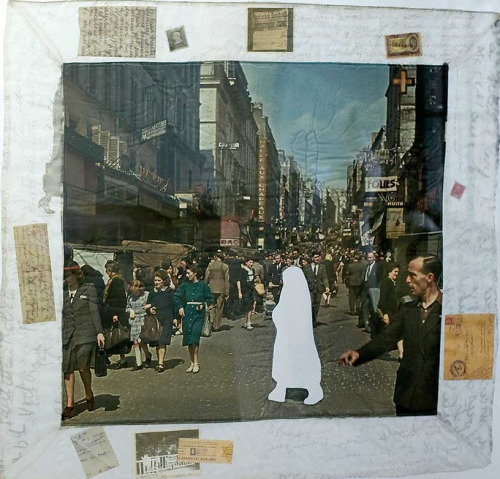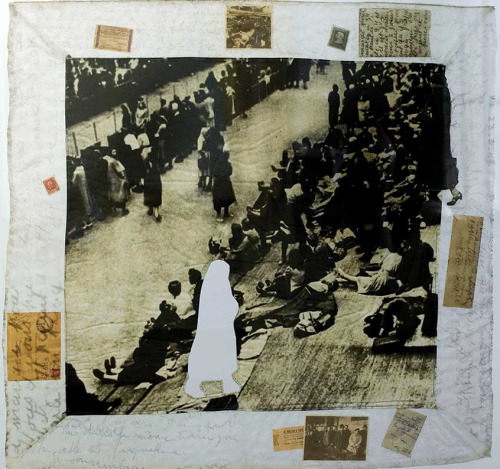ofskfe: Paris/Vel d'Hiv, Lisa Rosowsky, 2011.Two-sided quilt. Cotton, polyester, paper, gla
ofskfe: Paris/Vel d'Hiv, Lisa Rosowsky, 2011. Two-sided quilt. Cotton, polyester, paper, glass, wood, 40" x 40" When the French police rounded up Jews in the summer of 1942, they were taken to the Vélodrome d’Hiver, where they languished for days without adequate food, water, or sanitation before being deported to internment camps outside the city. Meanwhile, non-Jewish residents went about their daily lives in wartime Paris. The German magazine Signal, eager to show the world that the Nazis were benevolent occupiers, hired the photographer André Zucca to photograph Parisians enjoying “life as usual.” To produce this propaganda, Zucca was provided with what was then extremely rare Agfacolor film. The contrast between what was happening behind the walls of the arena—which people claimed to know nothing about at the time—and what went on in the streets was remarkable: two sides of the same city.The Jews were sent by train from the Vélodrôme d’Hiver to Drancy, and from there to Auschwitz. Witnesses recall letters being thrown from the trains, requesting anyone who picked them up to deliver them to loved ones back in Paris. I have included printed facsimiles of some of these letters in the borders of this piece, as well as other paraphernalia of the Vichy régime. -- source link
Tumblr Blog : ofskfe.tumblr.com

